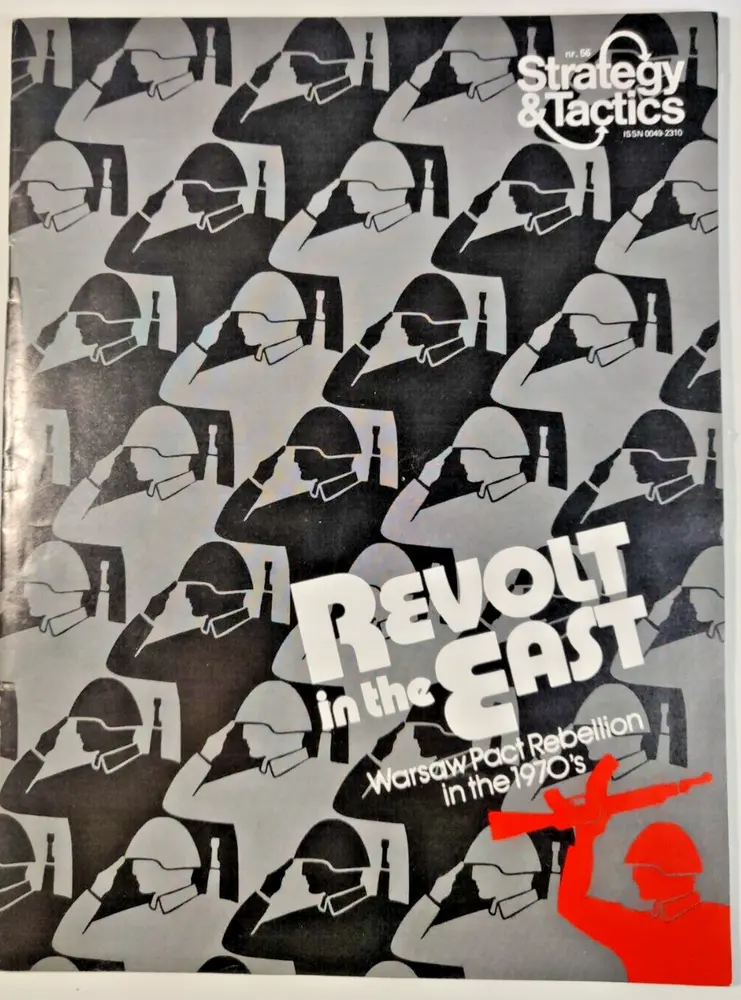Revolt in the East: Warsaw Pact Rebellion in the 1970’s (1976)
Revolt in the East: A Cold War-themed Board Wargame
Revolt in the East is a Cold War-themed board wargame published by Simulations Publications Inc. (SPI) in the 1970s. The game is a hypothetical wargame of Warsaw Pact nations revolting against the Soviet Union. It is significant because it allows players to simulate a hypothetical scenario of a rebellion against the Soviet Union, which was a major concern during the Cold War.
Game Components of Revolt in the East: Warsaw Pact Rebellion in the 1970’s
How To Setup Revolt in the East: Warsaw Pact Rebellion in the 1970’s
Setup involves placing the game map, setting up the initial unit positions according to the chosen scenario, and organizing the game charts and tables. Players must also determine the revolt status of Warsaw Pact countries using the Warsaw Pact Revolt Table. The game includes four scenarios, each with specific setup instructions: the Hungarian Revolt Scenario, the Czechoslovakia Resists Scenario, the Standard Scenario, and the Yugoslavian Revolution Scenario.
Gameplay Mechanics and Game Objective
Player Experience
**Revolt in the East** offers a fresh take on the Cold War era, engaging players in a hypothetical yet intriguing scenario. The game is relatively simple in design but streamlined in execution, making it accessible for those interested in wargames. The gameplay can become complex, especially in the later stages, where encirclement becomes a key strategy. The historical scenarios add a layer of realism and depth, allowing players to explore what-if situations based on actual events.
Pros
Cons
Personal Thoughts on Revolt in the East: Warsaw Pact Rebellion in the 1970’s
**Revolt in the East** is ideal for wargame enthusiasts and those interested in Cold War history. It offers a unique perspective on a rarely explored scenario, making it a valuable addition to any wargame collection. The game’s simplicity and streamlined mechanics make it accessible to new players, while the depth of the scenarios will keep experienced players engaged. However, it may not be the best fit for those seeking highly detailed or realistic military simulations.
We are supported by our audience. When you purchase through links on our site, we may earn an affiliate commission, at no extra cost for you. Learn more.

